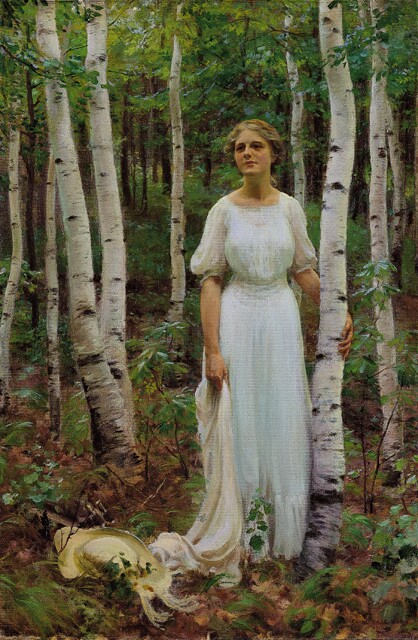The A. Merlin Steed and Alice W. Steed Collection
Merlin Steed and his wife Alice Wilcox Steed were art enthusiasts and collectors. Natives of Farmington, Utah, the Steeds moved to Southern California in the 1930s, where Merlin worked as a sales manager for the Electrolux Corporation and then as an agent for the Beneficial Life Insurance Company.
Over years, they gathered a collection of artworks by California artists, as well as other American and European painters. The Steeds donated 60 artworks to The Church of Jesus Christ of Latter-day Saints in 1955. In 1961, the gift was transferred to BYU with a total of 90 works given for the Steed Memorial Collection. A recent gift from the Steed’s grandchildren continue their family’s generous legacy.

German artist William Wendt emigrated to America at age 15, working as a furniture maker and commercial painter until entering art school in Chicago. The artist first visited California in 1894 and relocated there permanently in 1906. He remained endlessly fascinated by the Golden State’s diverse terrain and atmospheric light. His Canyon Stream evokes the feeling of a shaded area and the movement of cool water in the California mountains. Created later in the artist’s career, it shows a shift from more precise realism towards strong, geometric forms and bolder colors in the highlights and shadows.

Charles Courtney Curran became highly regarded for his idyllic portrayals of white-dressed women set within the verdant landscape of New York. This reflective, wooded portrayal exemplifies his unique style that fused Impressionist atmosphere with detailed realism.
Within the confines of the lush forest, the young woman appears enraptured—her shawl and hat cast aside as she communes with nature. This portrayal suggests the long-standing association of women and nature in art. The model’s statuesque yet shapely figure echoes the forms of the tree trunks. The flowing lines of her dress and shawl, along with the trailing ribbon of the hat, blend with the organic elements of the landscape.

Carl Oscar Borg emigrated to the United States from Sweden in 1901 and settled in California. His interests aligned with a group of artists and thinkers enthralled by traditional Native American culture, and his artwork focused on scenes of Indigenous peoples. Borg said of his native subjects, “To my mind they are the ‘only Americans,’ a fast disappearing race.”
Borg created this painting after an impactful visit to Antigua, Guatemala in 1908. The palace’s deteriorating stucco facade and crumbling architecture evidence the lingering devastation from a 1773 earthquake. The small group of Indigenous men and women seated in front of the palace may be an ironic statement about the national government’s neglect and discrimination of native peoples, a situation that Borg spoke against after his return.